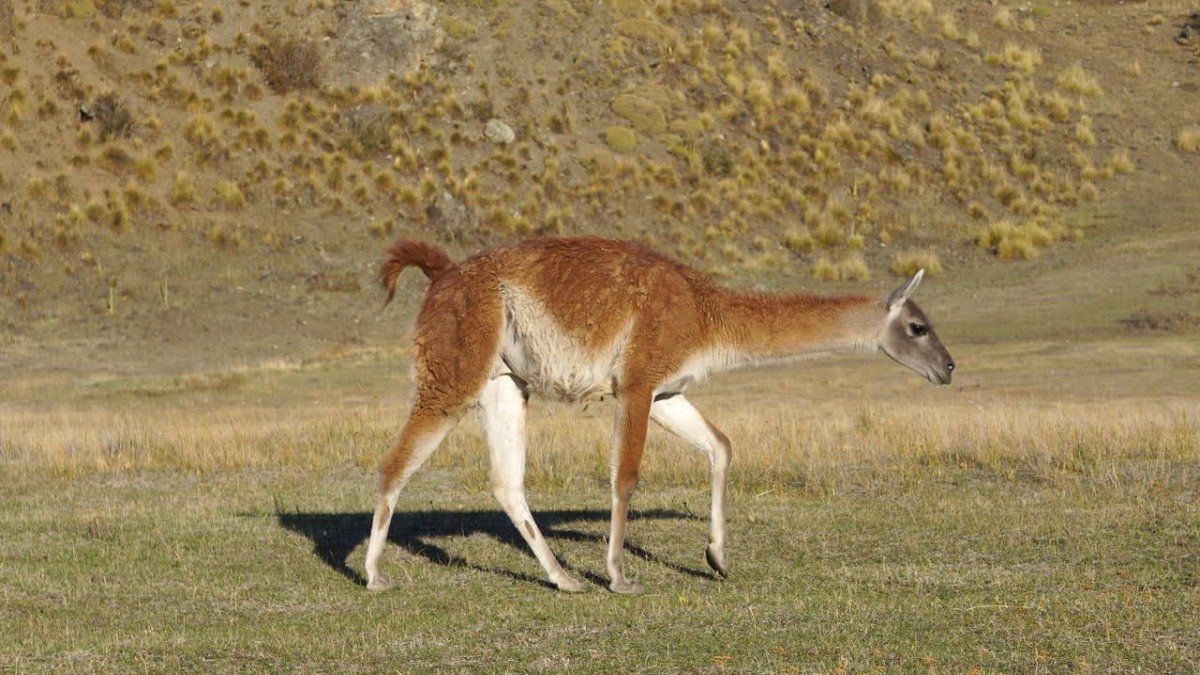The crisis generated by the overpopulation of guanacos in the Patagonia is reaching critical levels, affecting both local ecosystems and the region’s economy. The rural entities of Chubut, Santa Cruz, Río Negro, Neuquén and Tierra del Fuegonext to Argentine Rural Confederationss (CRA), ask measures to stop the advance of this native species that, in its current state, threatens to destroy the productive and ecological base of the Patagonian lands.
Added to this claim is the recent research by the group of EEA Santa Cruz Natural Resources and the opinion of the biologist Stuart “Chacho” Blakewho highlight the urgency of a comprehensive policy of management.
The accelerated growth of the guanaco population, which They reach more than a million copies in Chubutseriously affected the sheep sector. In the last 20 years, its stock fell 32%going from 10 to less than seven million heads.
While the guanacos expand without control and deplete vital resources such as pasture and water, also generate direct competition with sheep. For producers, this situation also facilitates the predation of your animals by foxes and pumas, which find sheep easy prey due to the scarcity of spaces suitable for grazing.
Rural federations emphasize that sheep production is one of the few viable activities in this region, and that its continuity depends on sustainable management of the fauna. “Patagonia covers 25% of the national territory and has 55% of the national sheep stock.. It is time for the authorities to develop a plan that allows coexistence between sheep and guanaco production,” they noted.
Embed – https://publish.twitter.com/oembed?url=https://x.com/CRAprensa/status/1846631758722109901?ref_src=twsrc%5Etfw%7Ctwcamp%5Etweetembed%7Ctwterm%5E1846631758722109901%7Ctwgr%5E0af45 3444daafeeeee25b04f494542d5149ad42c%7Ctwcon% 5Es1_&ref_url=https%3A%2F%2Fwww.infocampo.com.ar%2F desde-la-patagonia-se-suman-a-las-rurales-del-nea-y-petidas-para-el-manejo-del- guanaco%2F&partner=&hide_thread=false
International experts spoke about the situation
Stuart Blakea biologist with years of experience in Argentina, is one of the most critical of the lack of action. He assures that the guanaco, Far from being an endangered species, it grew disproportionately and now represents a threat to the balance of the ecosystem and the regional economy.
In a recent meeting with authorities, Blake stressed that current management, which allows the expansion of guanaco populations, is insufficient to control negative impacts: “If we don’t act now, the guanaco will destroy Patagonia. Overpopulation not only affects producers, but also the balance of the entire region,” he emphasized.
According to the biologist, the recent repeal of the national guanaco management plan should open the door to more rigorous provincial regulations. Holy CrossFor example, he already works in a legislation that would include the extraction of guanacos to reduce its density.
However, Blake warns that the implementation of these plans may face the resistance from environmental groupswhich he considers “uninformed” about the real impact of the species on the environment.
Guanacos affect biodiversity and degrade soil
A recent study by the EEA Santa Cruzconfirms that the excessive presence of guanacos can reduce diversity and quality of Patagonian grasslands. The research, led by the agricultural engineer Carla Cepedacompared fenced areas without guanaco access with others where they did graze, and revealed that The protected plots developed greater vegetation cover..
The analysis suggests that Guanaco pressure on grasslands contributes to soil degradationwhich in the long term worsens desertification. This not only affects sheep producers, but compromises the stability of local ecosystems. Cepeda highlighted that these findings provide essential data to anticipate the future of Patagonian grasslands.
“The real challenge is to apply this management in productive landscapeswhere intensive grazing of guanacos overlaps that of sheep, increasing the risk of overgrazing and soil degradation,” he warned.
The overpopulation of guanacos in Patagonia poses a challenge for both environmental conservation and the economic sustainability of the region.. The actors involved, from rural federations to scientists, agree on the urgency of a management strategy that reduces guanaco pressure on grasslands.
However, the path towards a solution is not easy, since the pressure from some sectors to keep the guanaco as species protected under the CITES Conventionadded to the resistance of certain environmental groups, could hinder the development of effective policies.
Faced with a worsening panorama, the rural sector and the scientific community warn that “without a population control and comprehensive management policy, Patagonia faces an ecological and productive crisis of devastating proportions“.
Source: Ambito
I am Pierce Boyd, a driven and ambitious professional working in the news industry. I have been writing for 24 Hours Worlds for over five years, specializing in sports section coverage. During my tenure at the publication, I have built an impressive portfolio of articles that has earned me a reputation as an experienced journalist and content creator.




